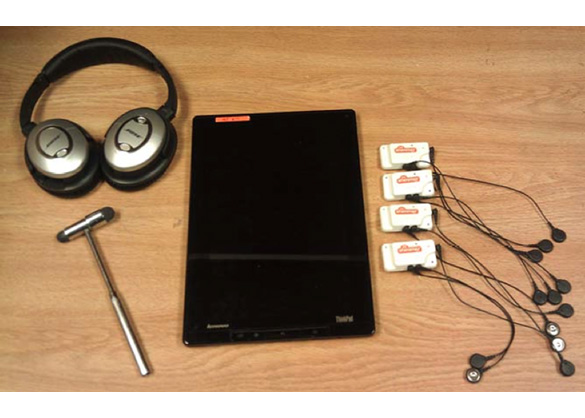Assessing Otolith-Organ Function with Vestibular Evoked Myogenic Potentials (VEMPs) in Parabolic Flight
PI: Mark Shelhamer, Kara Beaton (Co-I), Johns Hopkins University
PI: Mark Shelhamer, Kara Beaton (Co-I), Johns Hopkins University

- TA06 Human Health, Life Support and Habitation Systems
Exposure to novel gravitational environments elicits alterations in sensorimotor responses, such as changes in coordinated head-and-eye movements and variations in spatial perception and memory. While many of the resulting higher-level sensorimotor responses can be assessed (such as changes in body movement dynamics, as in our companion project T0025), there are relatively few tests to evaluate lower-level processing. However, detecting changes in primary afferent pathways, and in the end organs themselves, is important to understanding neural processing at the most basic level. Animal studies have shown that there are anatomic changes in otolith structure and in the neural connections from the otoliths to the brain during spaceflight; it is important to know if such changes also occur in humans to guide countermeasure development.
We will develop portable equipment and procedures to evaluate otolith function using vestibular evoked myogenic potentials (VEMPs). VEMPs are small, reflexive responses in the neck or eye muscles following otolith stimulation induced by auditory clicks and forehead taps. The proposed technology is at TRL 4. VEMPs are regularly recorded in our clinic with different hardware and software. These components need to be integrated. Initial testing of this configuration will lead to TRL 5.
In the long run, we hope to have VEMP testing performed onboard ISS, to track changes in otolith processing over the course of a mission. Parabolic flights will help validate our equipment and procedures for eventual use on ISS. This not only includes testing flight-suitable hardware and software, but developing efficient methods to apply vestibular stimuli in a time-constrained, high-performance operational environment.
NASA, DoD
A primary goal of this proposed technology is to characterize otolith function in multiple g-levels, including during g-level transitions, and over the course of adaptation to 0g. Both the sound clicks and forehead taps are administered at a high rate (up to 10Hz), so a significant amount of otolith information can be recorded during the brief transitions between 0g and 1.8g. This is valuable, as few tests are capable of sampling at a high enough rate to capture meaningful data during the g-level transitions associated with parabolic flight. Our test procedures and user interfaces will be new and can benefit greatly from flight testing before we propose them for use on ISS.
The proposed device is portable and battery operated, and responses can be recorded in just a few seconds or minutes.
Technology Details
-
Selection DateAFO5 (Jan 2013)
-
Program StatusWithdrawn
- 0 Parabolic
Development Team
-
PIMark Shelhamer
-
PI Organization
-
Co-IKara Beaton
-
Co-I Organization
-
Sponsor
-
More Information

